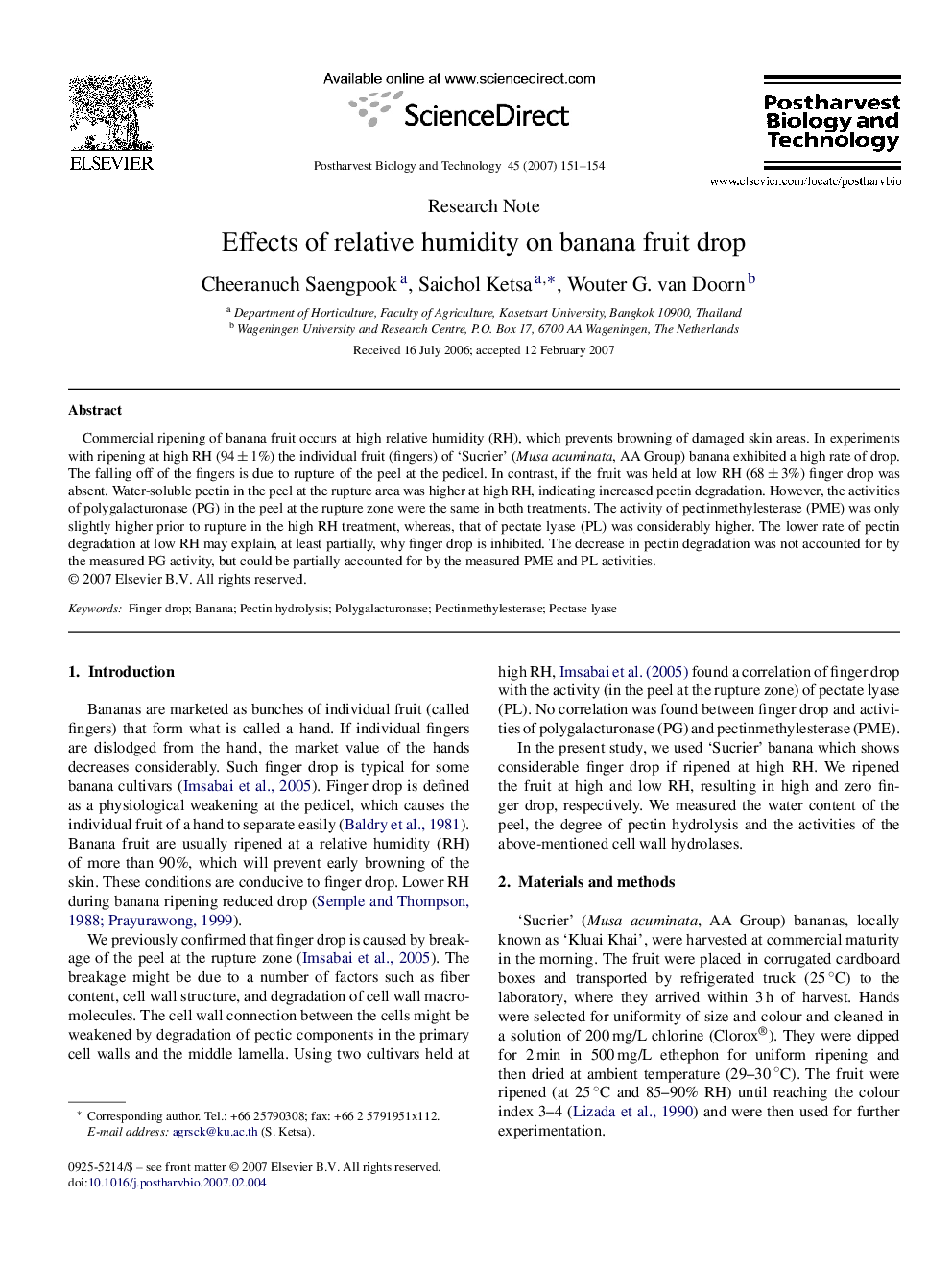| Article ID | Journal | Published Year | Pages | File Type |
|---|---|---|---|---|
| 4519777 | Postharvest Biology and Technology | 2007 | 4 Pages |
Commercial ripening of banana fruit occurs at high relative humidity (RH), which prevents browning of damaged skin areas. In experiments with ripening at high RH (94 ± 1%) the individual fruit (fingers) of ‘Sucrier’ (Musa acuminata, AA Group) banana exhibited a high rate of drop. The falling off of the fingers is due to rupture of the peel at the pedicel. In contrast, if the fruit was held at low RH (68 ± 3%) finger drop was absent. Water-soluble pectin in the peel at the rupture area was higher at high RH, indicating increased pectin degradation. However, the activities of polygalacturonase (PG) in the peel at the rupture zone were the same in both treatments. The activity of pectinmethylesterase (PME) was only slightly higher prior to rupture in the high RH treatment, whereas, that of pectate lyase (PL) was considerably higher. The lower rate of pectin degradation at low RH may explain, at least partially, why finger drop is inhibited. The decrease in pectin degradation was not accounted for by the measured PG activity, but could be partially accounted for by the measured PME and PL activities.
